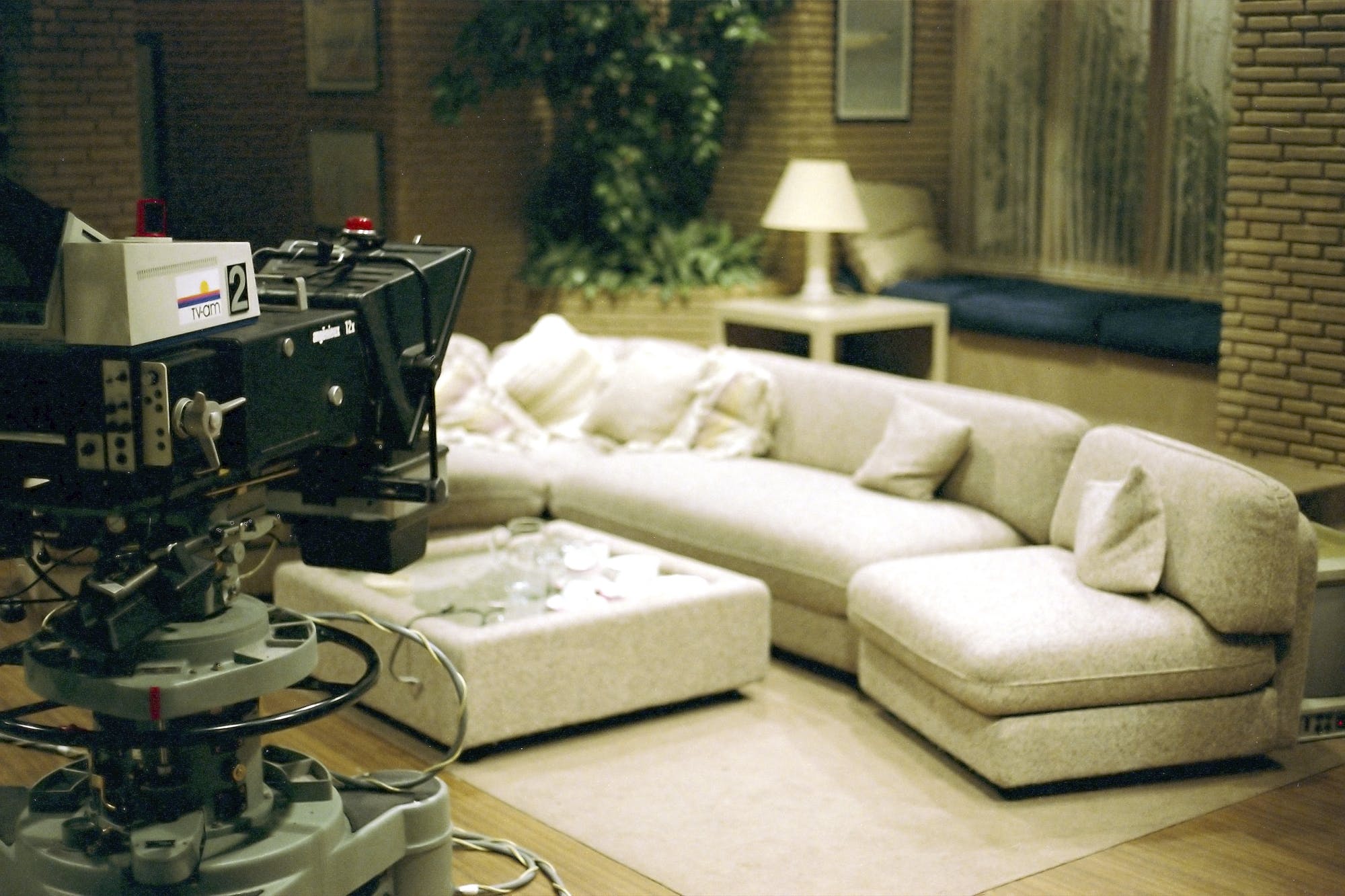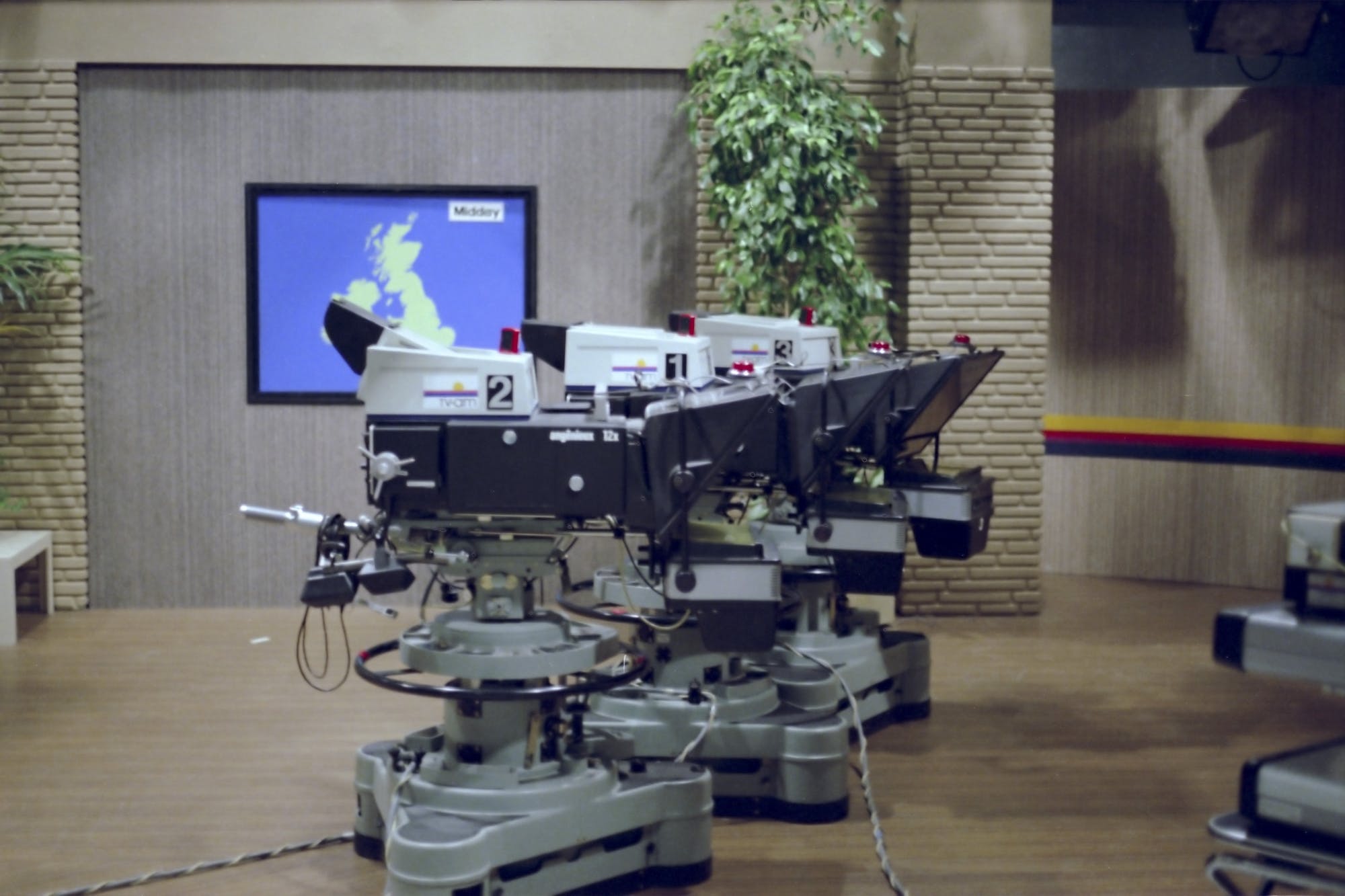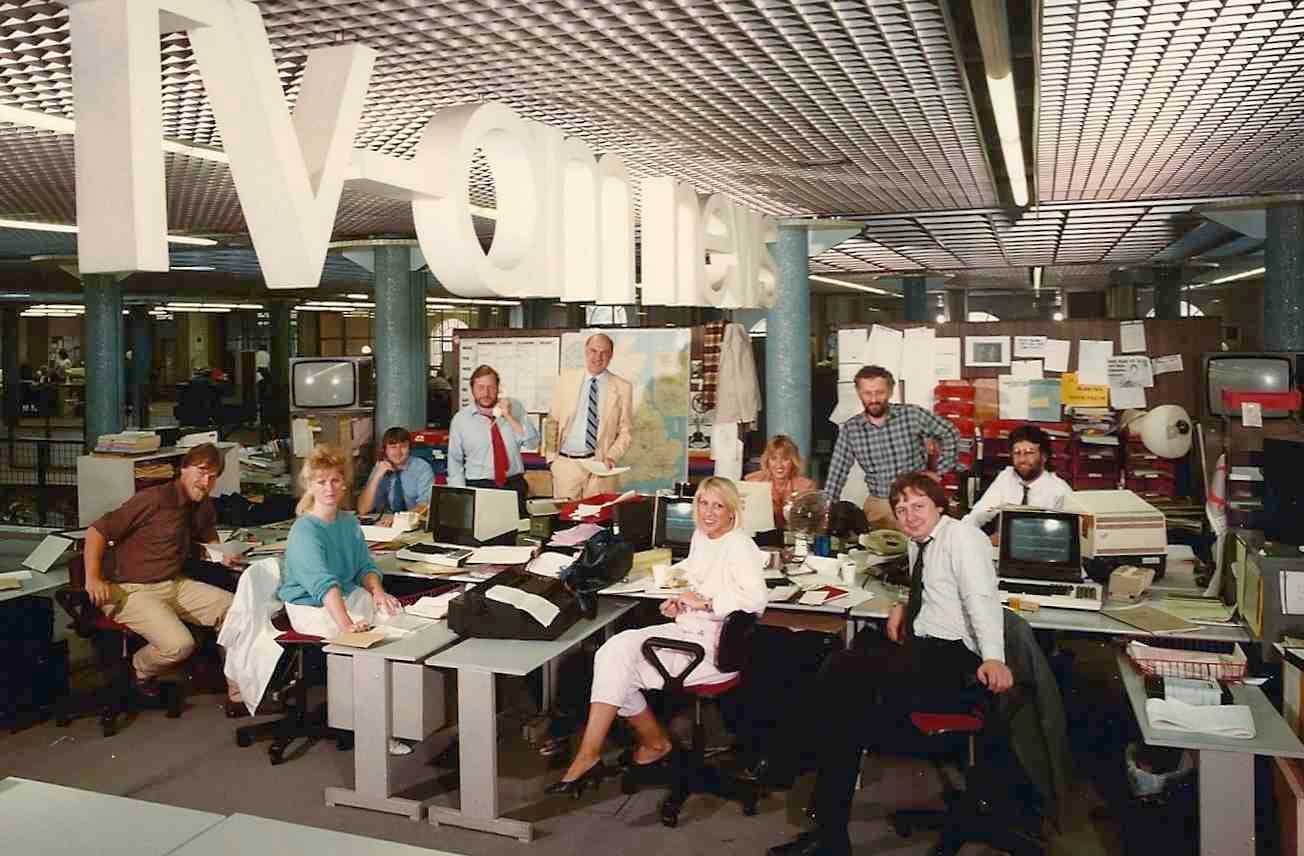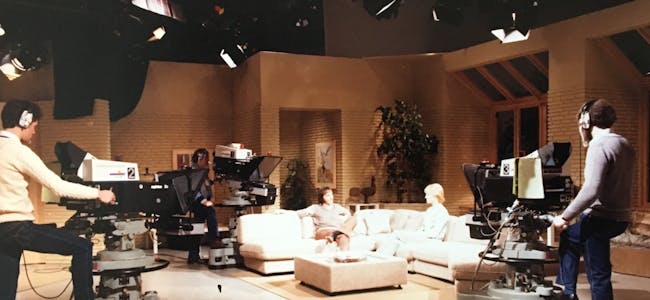Award winning architect Sir Terry Farrell was commissioned by TV-am to design Breakfast Television Centre.

In March 1981 a site was found - a 93,418 square foot Henly’s garage - located between Hawley Crescent and the Grand Union Canal in Camden Town, North London. Renovation began in August 1981
From Hawley Crescent the TV-am building was easily identifiable with large T V A M letters sticking out of the wall and a large sunrise archway over the entrance into the forecourt.

Farrell designed the atrium in keeping with the station’s early morning transmission times, portraying the sun’s travels from east to west, country by country across the globe.
The Japanese pavillion - TV-am’s Green Room where guests relax before going on air - represented the east. Moving westwards the huge staircase (called the wedding cake by some staff) depicts images of the Middle East and is also seen as an island surrounded in blue with boat-like gangways (the stairs) to upper shores.

The journey continues through temple like forms and Arcadian landscapes of the Mediterranean and Greece, ending in desert plants, which form the North American West.
TV-am’s two studios and technical areas led off from the Japanese pavillion. Studio A, 3000 square feet, was home to the Good Morning Britain set (designed by Eileen Diss). TV-am camera operator Paul Ream (extrashot.co.uk) took these photos of Studio A in 1983.



Studio B had a smaller version of the GMB set and was also used as the news studio.The offices, open plan, are situated on the first floor. The newsroom, above the Japanese Pavillion, seen as the focal point with banks of monitors and computers, linking TV-am to global news agencies.


The TV-am News letters were seen on air as a backdrop for “Daybreak” and the news bulletins in the first few months of 1983.
The crowning glory must be the 12 enormous eggcups (a dozen eggs) on the roof, seen from the canal.
The eggs caused the building to become known affectionately as ‘eggcup house’. Although most of the building has now changed, the eggcups remain on the roof to this day.

In 1993 the building was sold to MTV Europe. In recent years there was been a major redesign of the front on Hawley Crescent and of the interior.
The first real example of postmodern architecture in Britain, Sir Terry Farrell’s building won a Civic Trust Award in 1985.
If you’re ever at Camden Lock we hope you’ll look out for the eggcups.
If you have any photographs of the TV-am building, we’d love to hear from you. Did you work here? Share your memories of TV-am and Contact us here!

